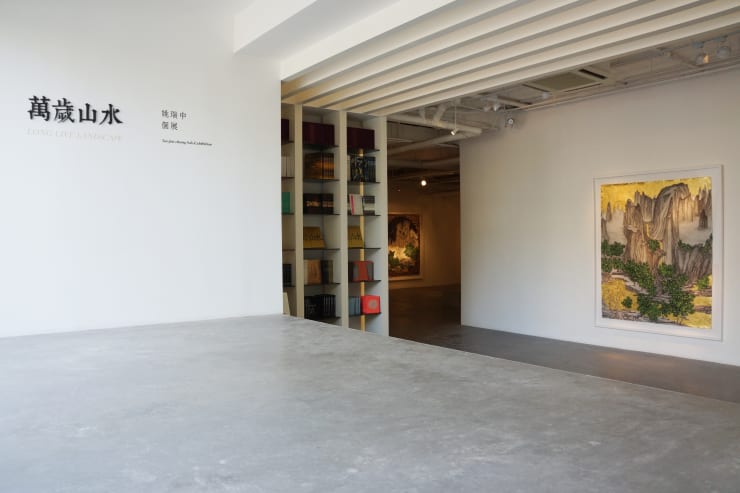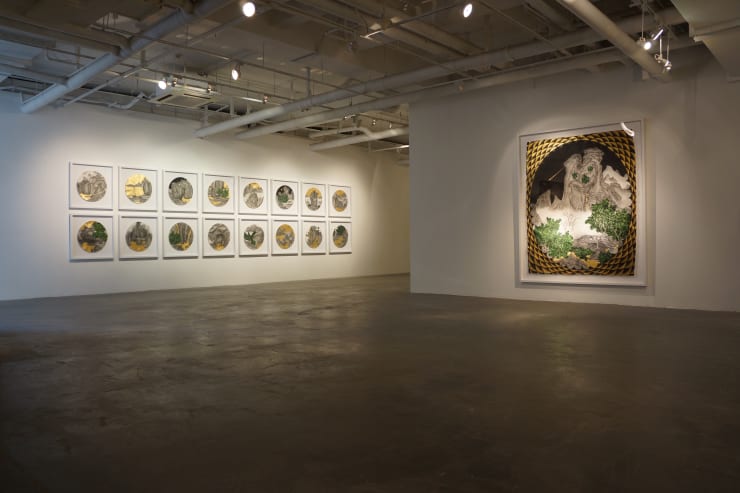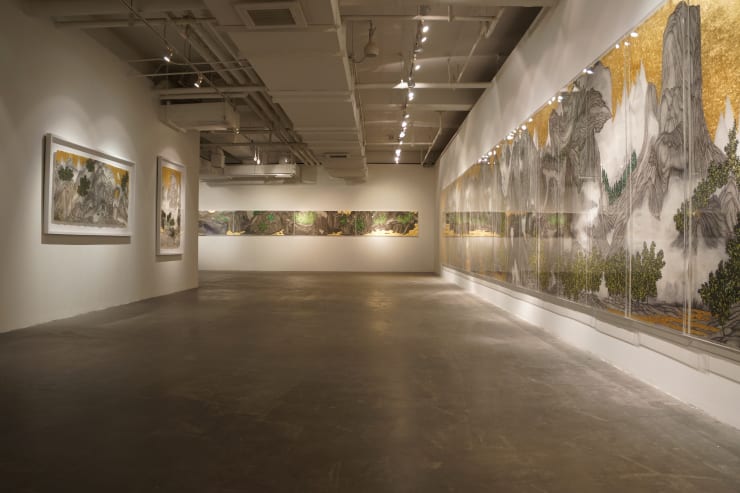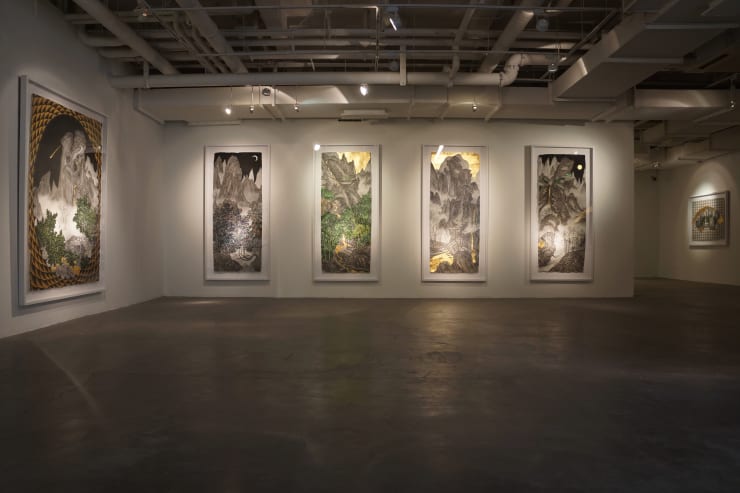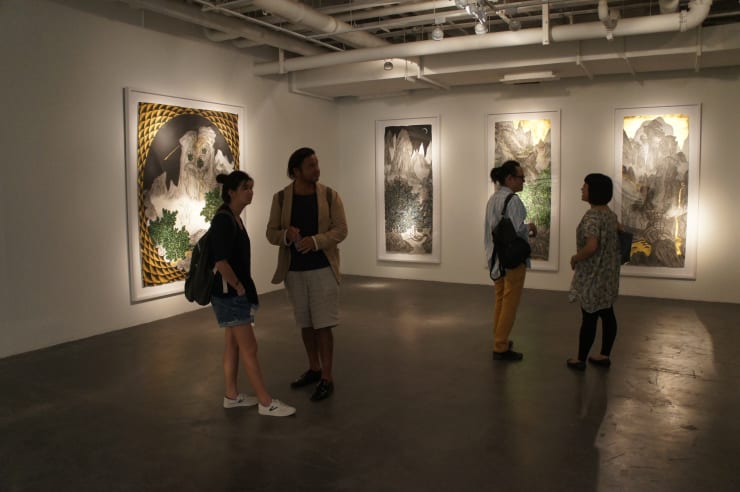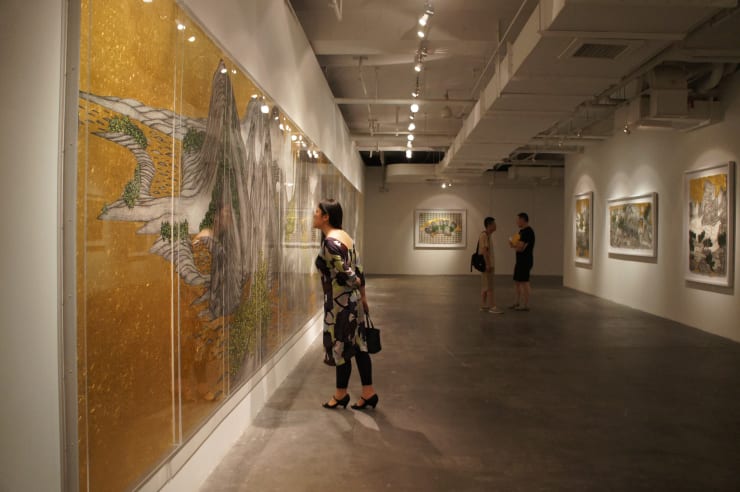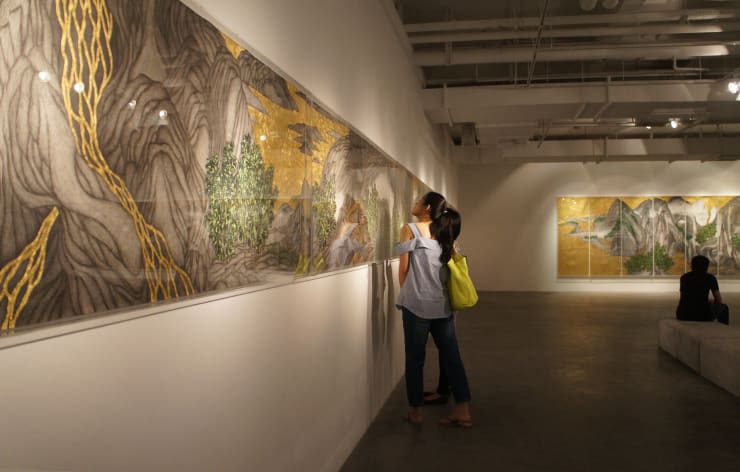萬歲山水: 姚瑞中 個展
耿畫廊將舉辦藝術家姚瑞中在中國的首次個展「萬歲山水」,在傳統山水畫示微的當代,如何透過臨摹傳統古畫進行美學上的創新,是姚瑞中近期創作的主軸之一。此展以平面繪畫為重點,將展出 35 件新作,展期自 2012 年 8 月 4 日至 9 月 16 日止。展覽開幕當天耿畫廊將邀請藝術家姚瑞中與藝術家兼策展人邱志傑先生及藝評兼策展人馮博一先生進行一場關於姚瑞中近期作品的對話。
此次個展的重點即是兩件巨幅的聯拼作品。一進入展場空間,迎面而來的是近 15 米的「萬歲山水(上卷)」,畫作臨摹自晚明變形主義代表畫家吳彬的《山陰道上圖卷》,畫面中奇山異水的布局,頗能表現台灣山川燥中帶潤、險中出奇的特色,畫面左下方繪有被群山包圍的台灣小島,島上站立著一位頭帶大盤帽、狀似領袖的黑衣人,高舉右手呼喊著「萬歲」。另,近 16 米的「神隱圖」臨摹自明末清初著名畫家蕭雲從的《青山高隱圖》,除了山水畫獨有的山雲江水,畫面中還暗藏著家庭私生活被狗仔隊跟拍的縮影,有別於文人畫的閒雲野鶴,恬淡中饒富幽默氣息。
「山水」作品雖說是水墨臨摹,但有別於古畫畫作,以「針筆」(硬筆)對應於傳統水墨畫的「毛筆」(軟筆),線條堆疊在粗糙紙材表面產生濃淡變化,造成繁瑣而近乎神經質的線條刻畫,在視覺上形成扁平化錯覺,大量身體勞動所形構的「偽山水」,頗有「春蠶到死絲方盡」之悲壯;另敷以金箔填補留白之處,具有如同佛龕壁畫般的特殊魅力;此外,姚瑞中不落款、不用壓角章、不用宣紙、不落苔點、不做傳統裝楨、不使傳統椿法、不用水染⋯⋯等刻意使用的材質與手法,都是回應這個偉大美學傳統的隱性反叛,透過改寫與挪用中國美術史的經典畫作,再將其轉化成個人日常生活樣貌,這種看似可用傳統美學進行辨識、卻又無法驗明正身的變異混搭風格,似與姚瑞中過去的攝影或行為作品無所關聯,其實是呼應了長期以來竄改歷史文本以顛覆正統性的創作軸線。
姚瑞中
1969 年出生於台北, 1994 年畢業於台北藝術大學美術系,目前任教於臺灣師範大學美術系。作品曾被台北市立美術館、高雄市立美術館、台灣美術館、澳洲昆士蘭美術館、美國康乃爾大學美術館、法國國家圖書館以及國際上許多私人典藏。曾受邀參加 1997 年威尼斯雙年展、 2005 年橫濱三年展、 2009 年亞太三年展、 2010 年台北雙年展聯動計劃及 2012 年上海雙年展,也曾從事過小劇場、電影、美術史教學、藝術評論、策展等工作。近年個展包括:倫敦葛豪士畫廊「如夢令」(2010)、香港漢雅軒「甜蜜蜜」(2010)、 MOT / ARTS 「甜蜜蜜」(2011)、台北耿畫廊「萬歲 / 山水」(2012)等。
